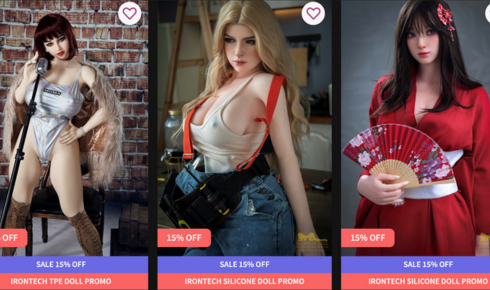The adult industry has seen significant diversification in recent years, with new categories emerging that appeal to different tastes and preferences. Among the most debated is the young style, a category that, while marketed strictly for adults, draws on aesthetics of youthfulness, slim proportions, and lighter body frames. Discussions around young sex dolls are especially relevant in Australia, where strict regulation of adult products meets an increasingly open cultural conversation about choice, ethics, and design.
Social and Cultural Context
Reactions to the young category are mixed. On the one hand, advocates argue that diversity in design is essential for a mature and responsible market. Customers should have the right to select models that suit their personal preferences, whether that means realistic full-sized dolls or more compact youthful designs. On the other hand, critics express concern that youthful aesthetics risk pushing the boundaries of what society considers acceptable.
In Australia, where adult products are legal but closely monitored, these debates take on additional weight. Public opinion is shaped by strong social values around consent and protection, and any product that hints at blurring these values attracts scrutiny.
Features of the Young Category
What distinguishes the young range from other dolls is not age, but style. These models are always designed as 18+ adult products, yet they embody aesthetics linked with youthfulness and smaller builds.
- Compact proportions that make handling easier compared to full-sized models.
- Lightweight frames that appeal to buyers who prefer practicality.
- Stylised aesthetics with softer or more delicate features.
For many, the attraction lies in convenience and design variation, not in crossing ethical lines. Retailers such as Leeloo Dolls make this clear by emphasising transparency and compliance in how the category is presented.
Legal Framework in Australia
Australia regulates the adult industry carefully, and products in sensitive categories are subject to heightened attention. Clear labelling and strict 18+ marketing are essential for compliance. Unlike some countries where the young range faces outright bans, Australian authorities focus on ensuring that the presentation of these products cannot be confused with anything outside of the adult market. This approach allows the industry to operate, but under close observation.
Ethical Dimensions
The ethical debate surrounding young-style dolls reflects a larger question: how far should adult industries go in exploring diverse designs? Critics worry about cultural impact, while supporters argue that prohibition does not resolve underlying issues of demand. Instead, they point to the importance of transparency and legal oversight as safeguards.
Retailers play a central role in this discussion. By offering young sex dolls with clear adult-only framing, they set boundaries that align with both customer choice and social responsibility. This careful balance is what allows the category to exist within the law while also addressing consumer interest.
Demand and Future Trends
Despite the controversy, demand for this category continues. Compact and lightweight dolls attract buyers who value ease of use and storage, while stylised designs appeal to those interested in diversity and artistic expression. In Australia, as elsewhere, the existence of this demand ensures that the debate will not disappear. Instead, the future likely lies in stricter regulation, clearer product presentation, and ongoing cultural negotiation.
Final Perspective
The young category demonstrates both the opportunities and the challenges facing the adult industry today. It shows that consumer demand is varied and complex, while also highlighting the ethical boundaries that must be carefully respected. In Australia, where regulation and cultural expectations are both strong, the discussion around young sex dolls is not just about products — it is about how society navigates the intersection of freedom, responsibility, and design innovation.

